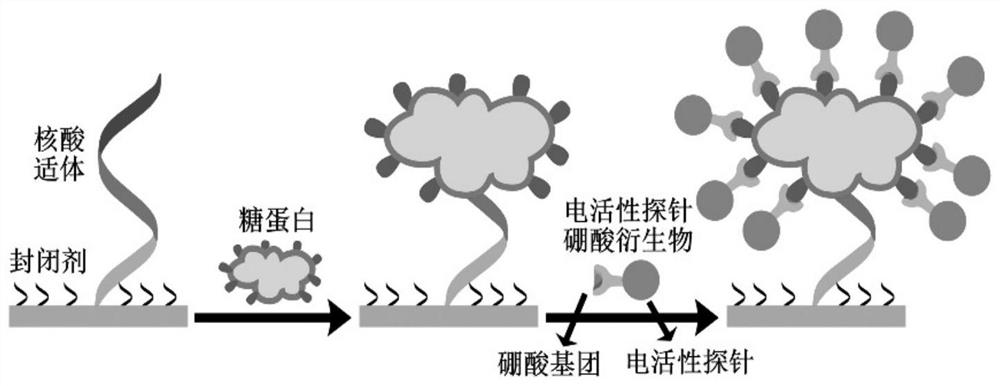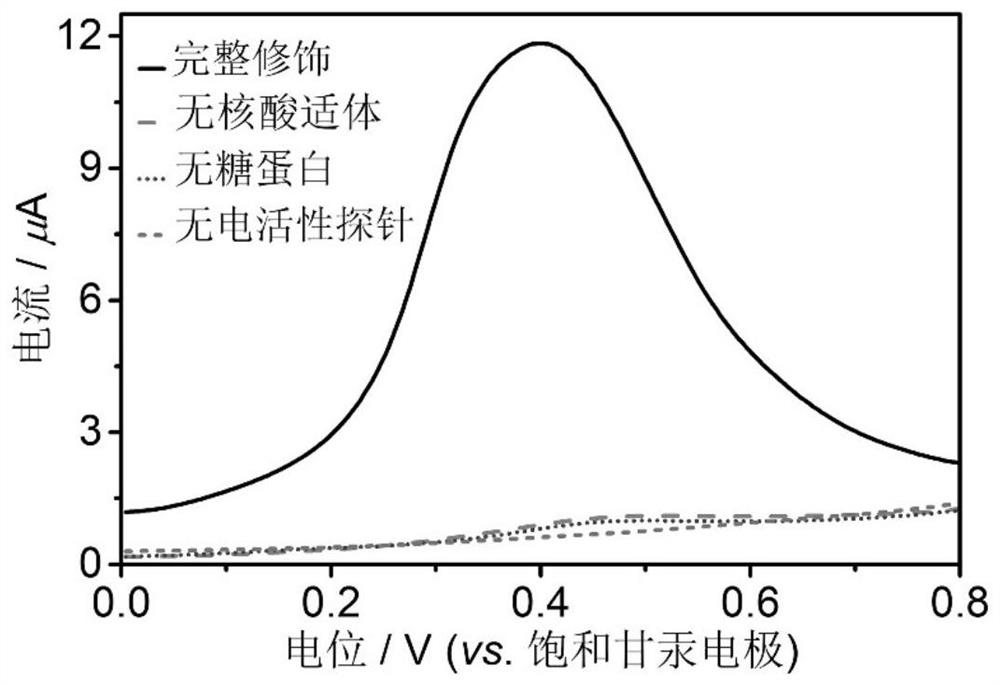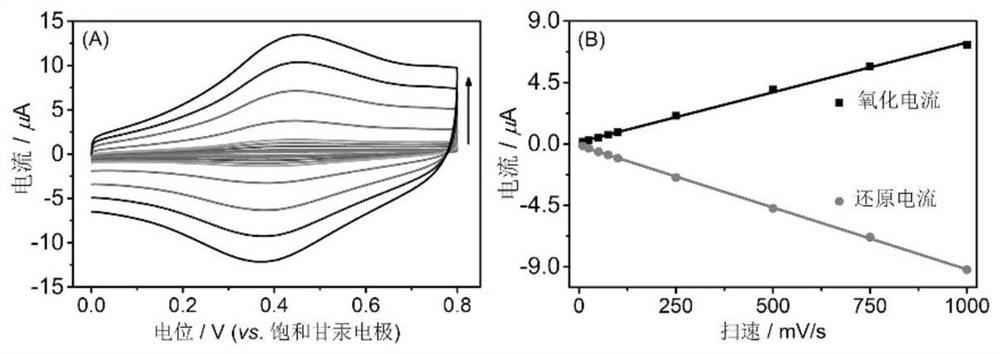Electrochemical aptamer detection method of glycoprotein
A detection method and glycoprotein technology, applied in the field of electrochemistry, can solve the problems of high cost of enzymatic signal amplification, complex labeling process and high cost, and achieve the effects of short detection time, high sensitivity and low cost.
- Summary
- Abstract
- Description
- Claims
- Application Information
AI Technical Summary
Problems solved by technology
Method used
Image
Examples
Embodiment 1
[0028] Example 1: Feasibility study of the electrochemical aptamer detection method for glycoproteins.
[0029] 0.1 μM nucleic acid aptamer modified with thiol groups at the end was added dropwise to the surface of the gold electrode and incubated for 15 min; then, the remaining active sites on the electrode surface were blocked with 2 mM mercaptohexanol; then, the electrode surface was mixed with 10 ng / mL glycoprotein. Incubate for 30 min and soak in 0.1 mM 4-(ferroceneacetamido)phenyl)boronic acid (Fc-PBA) solution for 30 min; finally, insert the resulting electrode into 25 mM lithium perchlorate solution, using a square wave volt Anfa (SWV) for testing, from figure 2 It can be seen that for the fully modified gold electrode, a strong oxidation peak can be observed at 0.4V; if no nucleic acid aptamer, glycoprotein or Fc-PBA is added to the electrode surface modification, no obvious oxidation peak can be observed. oxidation peak. Therefore, the resulting detection signal c...
Embodiment 2
[0030] Example 2: Selectivity study of electrochemical aptamer detection method for glycoproteins.
[0031] To evaluate the selectivity of the electrochemical aptamer detection method for glycoproteins, alpha-fetoprotein (AFP) was selected as the target glycoprotein, and 10 ng / mL AFP, 100 ng / mL γ-globulin (Glo), 100 ng / mL human serum albumin were collected (HSA), 100ng / mL carcinoembryonic antigen (CEA), 100ng / mL prostate specific antigen (PSA), 100ng / mL carbohydrate antigen 15-3 (CA15-3) or 1.0μg / mL glucose (glucose) the peak current. from Figure 5 It can be seen that only the target glycoprotein (ie AFP) can generate a strong oxidative current signal, while the oxidative current generated by the other detected interference components is similar to that of the blank control without the target glycoprotein. Obviously, the glycoprotein electrochemical aptamer detection method of the present invention has good selectivity.
PUM
 Login to View More
Login to View More Abstract
Description
Claims
Application Information
 Login to View More
Login to View More - R&D
- Intellectual Property
- Life Sciences
- Materials
- Tech Scout
- Unparalleled Data Quality
- Higher Quality Content
- 60% Fewer Hallucinations
Browse by: Latest US Patents, China's latest patents, Technical Efficacy Thesaurus, Application Domain, Technology Topic, Popular Technical Reports.
© 2025 PatSnap. All rights reserved.Legal|Privacy policy|Modern Slavery Act Transparency Statement|Sitemap|About US| Contact US: help@patsnap.com



